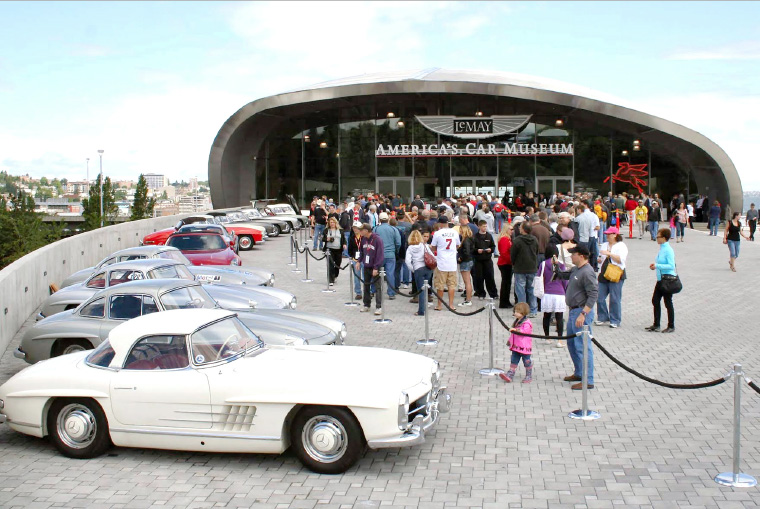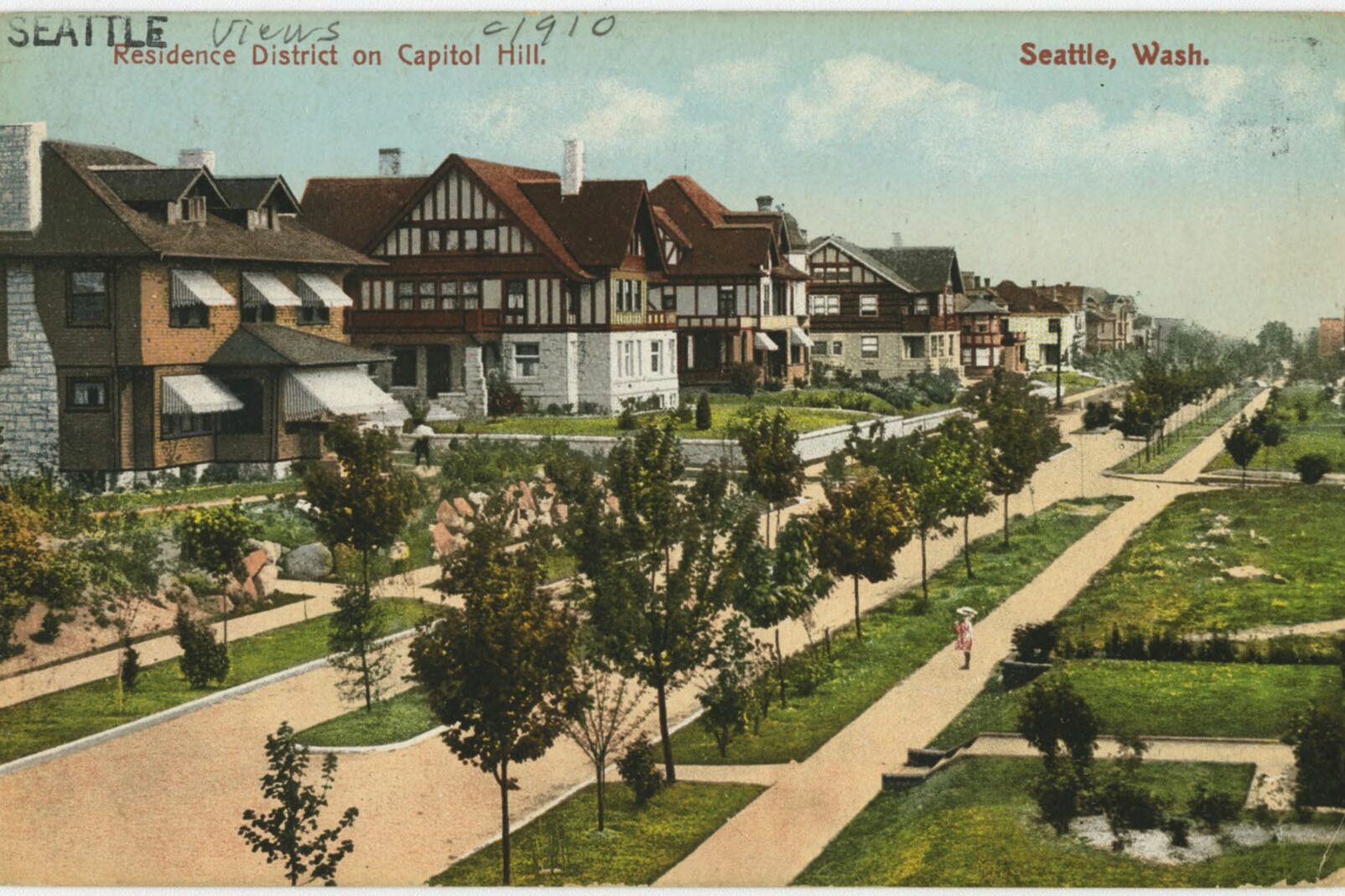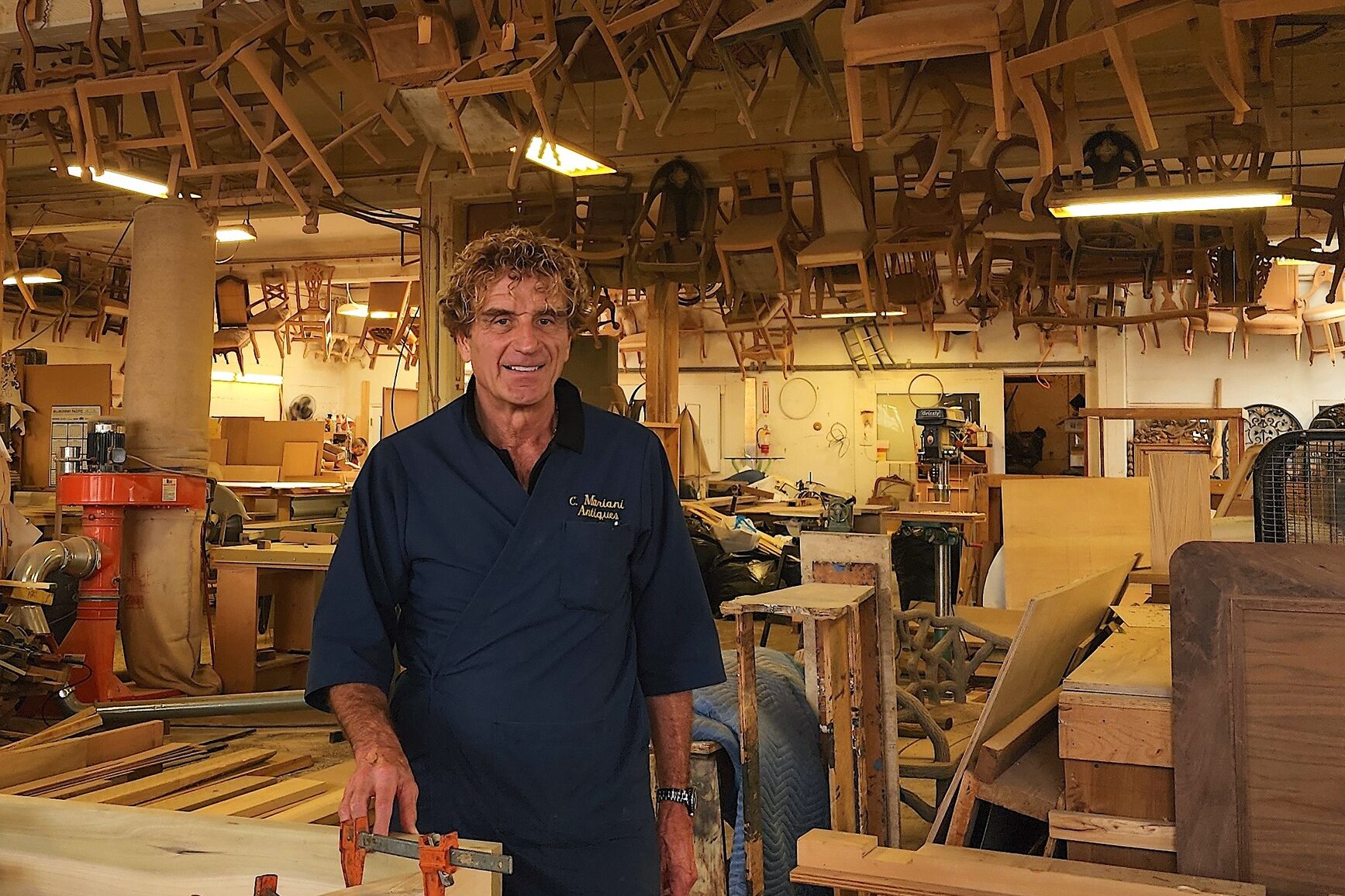From a 1926 Model T to an ice-blue 1951 Studebaker to the Flintmobile made for the 1994 Flintstones movie, all sorts of automotive rarities can be found at the LeMay-America’s Car Museum in Tacoma, Wash. The collection of 255 vehicles is billed as the largest automotive museum in North America.
Just off I-5, about 35 miles south of Seattle, the museum’s sleek design nicely complements its rotund next-door neighbor, the Tacoma Dome. Vintage cars are often parked outdoors on the front plaza and inside, there are four floors and 12 galleries to explore. It’s a popular place. Last year there were nearly 137,000 visitors.
Even though the word “America” is part of the name, aficionados of Italian vehicles still have several reasons to visit. One of the more charming cars on display is the tiny Fiat 500 Topolino. About 520,000 of these four-cylinder 16-horsepower cars were produced in Italy from 1936 to 1955. The cream-colored one in the museum’s collection rolled off the assembly line in 1937.
The diminutive car, brimming with personality, was developed through a Fiat design contest launched in 1933 by company chairman Giovanni Agnelli. Agnelli invited designers from throughout the company to design a utilitarian and economical car capable of carrying two people and their luggage. Twenty-nine year-old Dante Giocosa and his colleagues in the aeronautical group were selected.
It was called the Topolino, or “Little Mouse,” because its front end resembled another famous little mouse of the day—Mickey Mouse, created by Walt Disney in 1928. At the time, the Fiat 500 was one of the smallest cars in the world, with a top speed of 53 miles per hour, not much faster than a professional racing cyclist. But it was perhaps the most popular mass-produced small car of its era.
“The Topolino is a favorite in our collection,” said Renee Crist, collections manager. “Out of the half-million produced over two decades, about 1,000 were exported to the U.S.”
The museum’s Topolino spent a lot of time in Washington state. “It was once owned by a collector in Blaine, Wash., on the Canadian border,” said Crist, “and restored with parts found in both the U.S. and Europe. This was before the internet, remember, so finding out who had parts and where they were located was a much more difficult process.”
The Topolino might be little, but the car has a huge history. It made appearances in many motion pictures filmed in Italy, with perhaps its most famous starring role in “Roman Holiday.” This 1953 film followed the budding fairy-tale romance between a runaway princess, played by Audrey Hepburn, and a street-smart American reporter, played by Gregory Peck. Watching the 6-foot 3-inch actor trying to maneuver his lanky limbs out of the Topolino’s tiny backseat is worth seeing the film a second time!
Throughout its heyday, the Topolino appeared as a backdrop in many posters and advertising campaigns. There was even a song called “Sulla Mia Topolino” (“In My Topolino”) by the musical team of Rolando and Valabrega. Jay Leno, famous for his vintage car collection, also owns a 1937 Topolino, once referring to it as the car that “women can’t resist.”
In addition to the Fiat, America’s Car Museum pays homage to Italian scooters with a 1960 Lambretta L1-150 on display in a jaunty turquoise-and-white paint scheme. Rakish and streamlined, the Lambretta was first produced in 1947 and named for the Lambrate district in Milan where the factory was located.

The scooter’s inception is attributed to Ferdinando Innocenti, an Italian industrialist who lost his steel production plant during Allied bombing in World War II. After the war, he realized there was a need for inexpensive private transportation, and he turned to aeronautical engineer Corradino D’Ascanio for help. Innocenti had three priorities: He wanted the scooter to be easy to drive for both men and women; it had to carry an additional passenger; and it could not get the driver’s clothes dirty.
Scooter popularity boomed in the 1950s and 1960s, then started to nosedive. In 1972, Lambretta was sold to an Indian company that bought the manufacturing plant and trademark rights.
About 600 of the cars in the LeMay-America’s Car Museum were donated by the family of Tacoma native Harold LeMay, who passed away in 2000. A self-made millionaire who owned and operated a garbage-hauling company in western Washington, LeMay started collecting cars after World War II, buying up vehicles he thought best represented the history of the automobile in America. In about 50 years, he amassed more than 3,000 cars, setting a Guinness Book of World Records as the largest antique and vintage vehicle collection in the world.
Despite his wealth, LeMay was a kind and unassuming man who often wore a t-shirt and overalls regardless of the occasion. Each year, LeMay and his wife Nancy would open some of their collection to the public. Without any advertising, the event would draw about 10,000 people.
When America’s Car Museum first opened in 2012, it included a splashy “Ferrari in America” display but that has since been replaced. Long-range exhibit plans include a display of Alfa Romeos but no date has been set.
For more on LeMay-America’s Car Museum, visit www.americascarmuseum.org.































